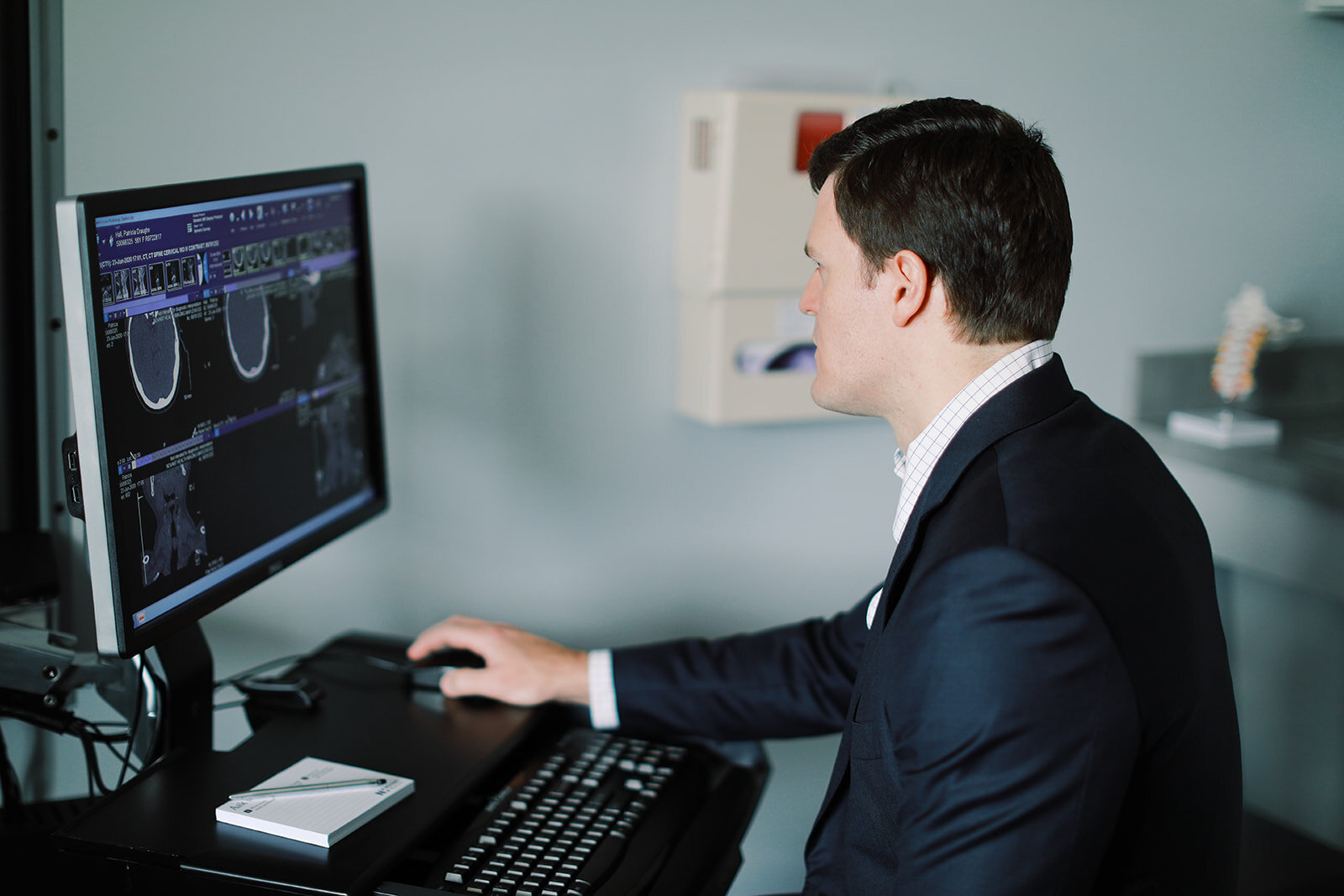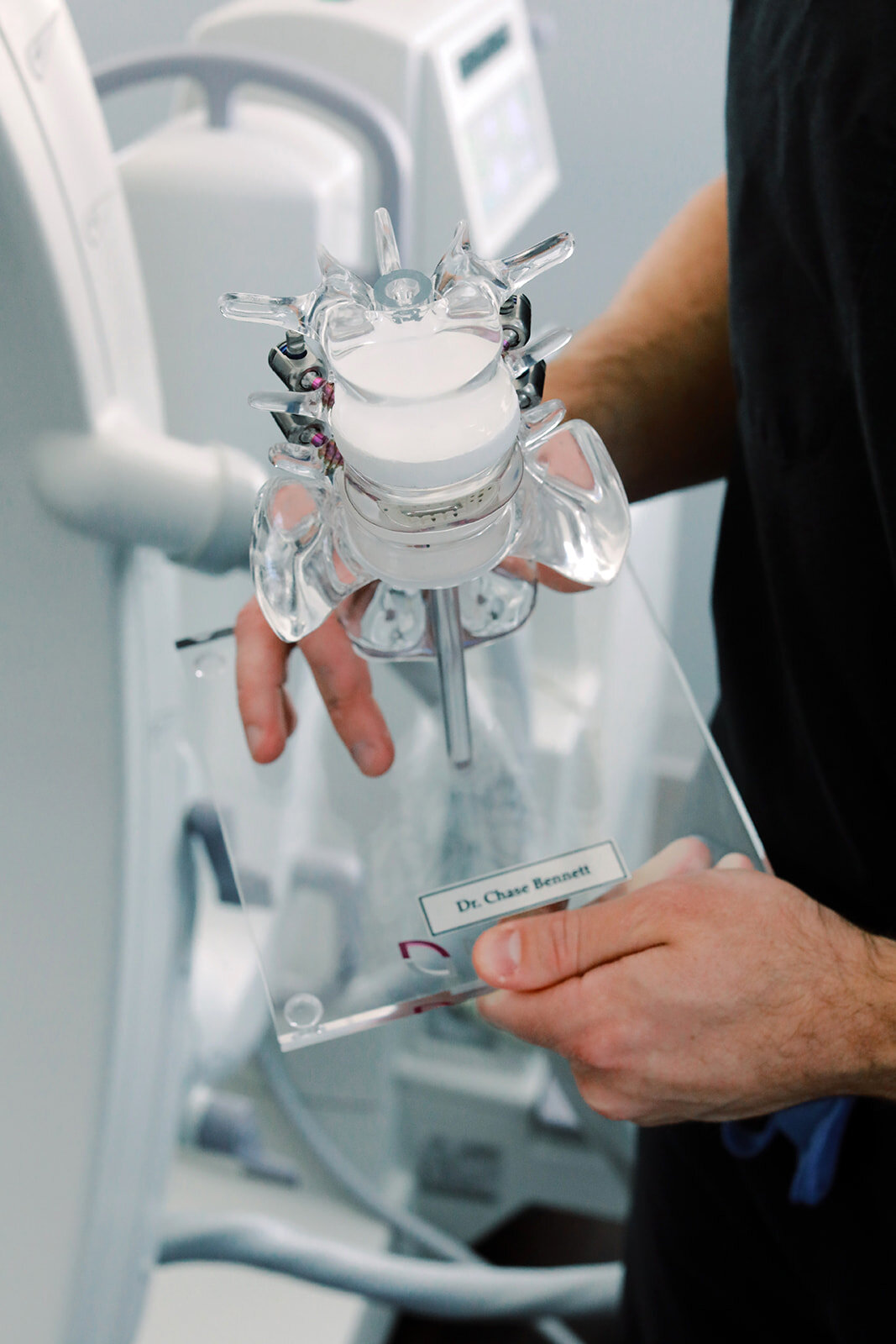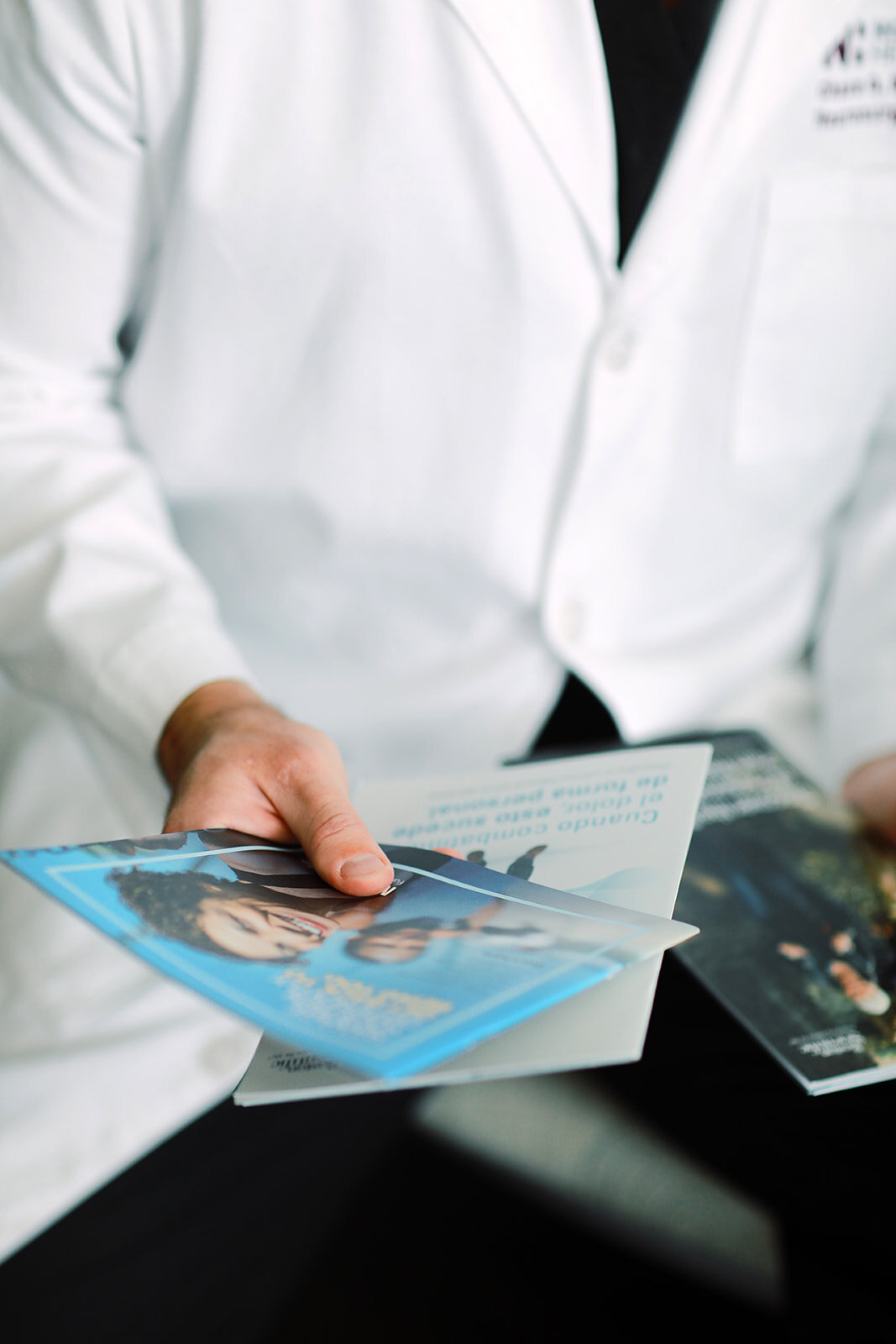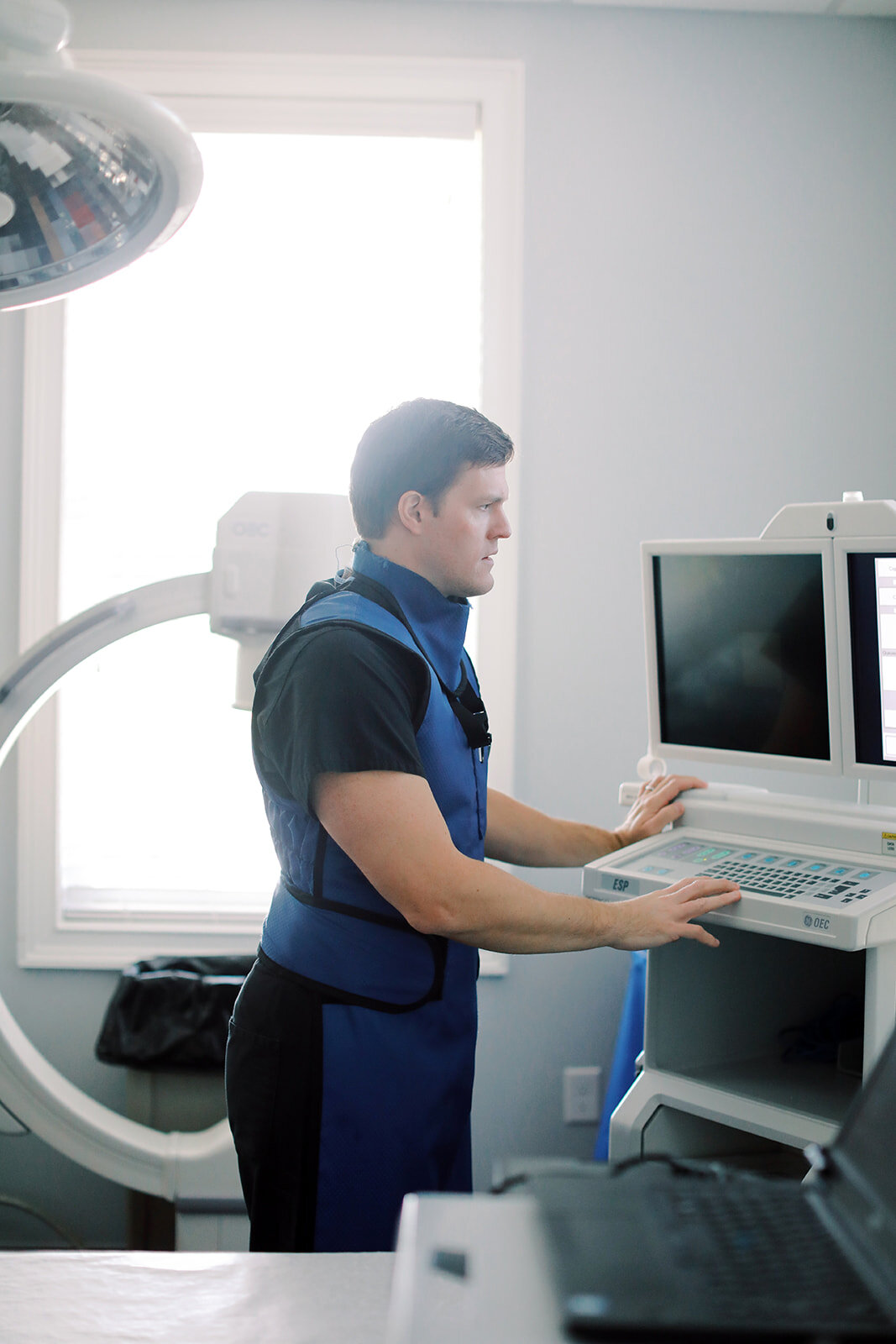If you have any questions about ACDF or spine surgery, please call or visit our office or your primary/referring physician. This patient information is not a replacement for in-person professional medical advice.
General overview
Often times pain radiating down the arm is the result of a pinched nerve in the neck. This is very similar to sciatica but affects the arm rather than the leg. Depending on the circumstances, some patients will improve with time and possibly the addition of physical therapy and/or specialized injections by one of Dr. Bennett’s partners. If surgery is required, often this is done by accessing the nerves through the front of the neck. In this procedure the affected disc level is removed which allows Dr. Bennett to safely access the spinal cord and nerves that travel down the arm. Once the pressure is removed, the disc is then replaced either with a replacement disk or a titanium spacer depending on the individual case and circumstances
What to expect
Before surgery
Your physician will review your condition and explain treatment options, including medications, physical therapy, and other surgeries. Should you have any questions regarding the procedure, do not hesitate to ask your surgeon. Your physician will provide thorough preoperative instructions.
During surgery
An individual’s surgical procedure and recovery may deviate from what is described herein. This information is not intended to supersede or supplant the information provided by your surgeon. After you are sedated, positioned on your back, and surrounded by the appropriate surgical draping, an X-ray image is taken of your spine to identify the location of the operative disc space.
Step 1: Approach Your surgeon will make an incision to the left- or right-hand side of the neck above the treatment area. The size of the incision can vary based on the number of levels and/or complexity of the case.
Step 2: Disc removal The diseased or damaged disc is removed to reduce pressure from the symptomatic cord or nerve root.
Step 3: An implant is inserted into the void left once the disc is removed. This implant acts as mechanical support for the vertebrae while bone grows between vertebral bodies during the fusion (bone healing) process. That segment of your spine will stabilize once fusion occurs.
Step 4: Your surgeon may choose to add fixation depending on the type of implant used. A small plate and screws may be placed over the disc space to act as a stabilization device (internal brace) to help hold everything in place while fusion occurs.
After surgery
After surgery, you will wake up in the recovery room, where your vital signs will be monitored and your immediate postoperative condition carefully observed. Once the medical staff feels that you are doing well, you will either be discharged home or transported to a hospital room. Your physician will determine the best postoperative course for you. This will include any medications to take home, as well as a prescribed program of activities. Your physician will provide instructions on wound care, exercises, collar wear and limitations to postoperative activity.
Frequently asked questions
Can I shower after surgery?
Generally patients may shower 48 hours after surgery
When can I drive?
For a period of time after your surgery, you may be cautioned about activities such as driving. Your physician will tell you when you may drive again depending on your individual case
Will I set off a metal detector?
The implants used in this procedure will not set off a metal detector.




